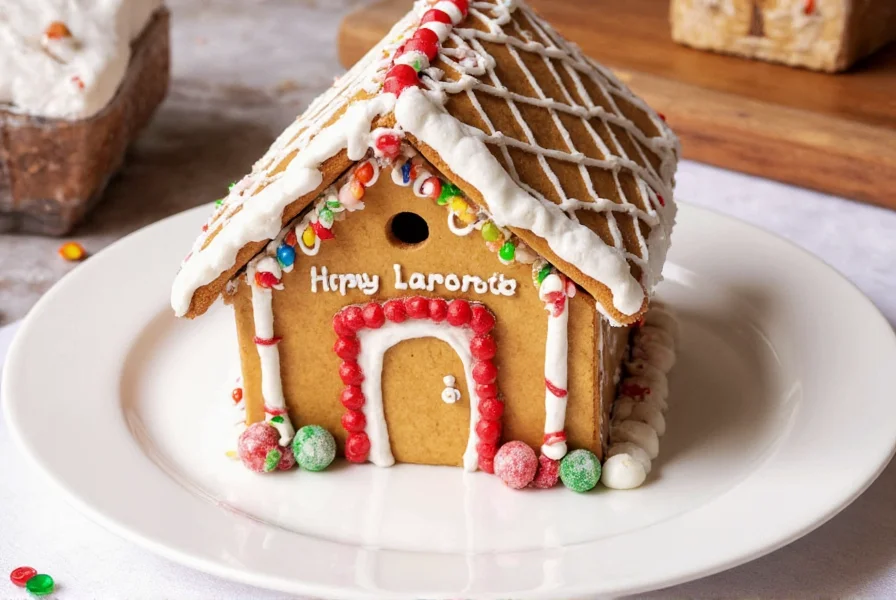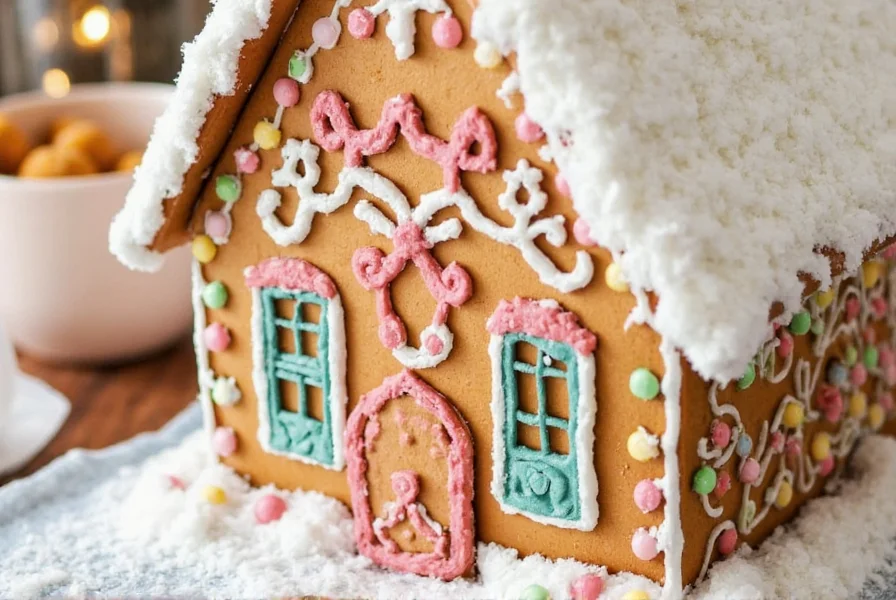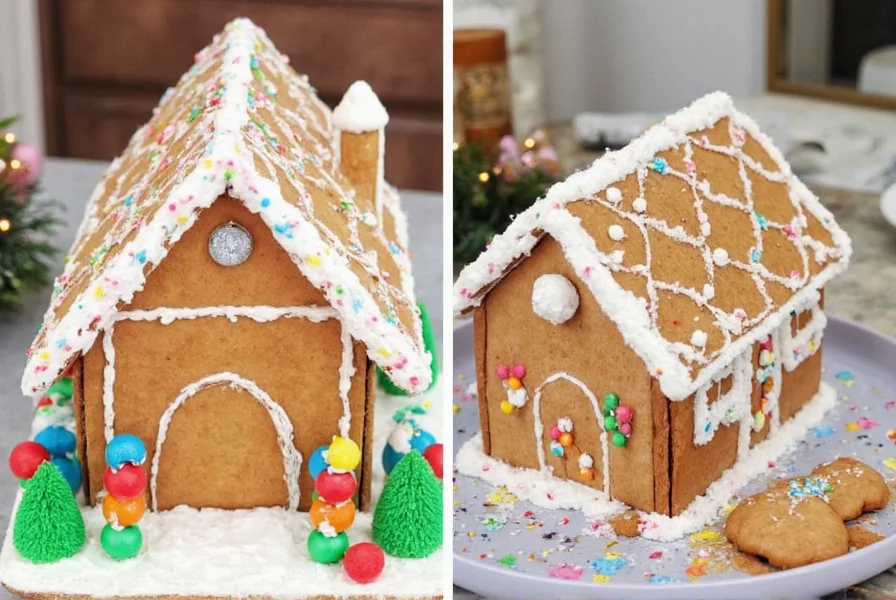Creating a gingerbread house transcends simple holiday baking—it's an art form blending architecture, confectionery, and storytelling. While the classic cottage design remains popular, contemporary interpretations have expanded the possibilities far beyond ginger cookies and candy canes. This guide explores innovative approaches that maintain structural integrity while maximizing creative expression, ensuring your edible architecture stands tall throughout the holiday season.
Traditional Gingerbread House Designs
The enduring appeal of traditional gingerbread houses lies in their nostalgic connection to European holiday customs. Originating from 16th-century Germany, these edible structures gained global popularity through Hansel and Gretel folklore. Modern bakers honor these roots while incorporating contemporary techniques that prevent the common issue of structural failure.
When constructing a classic design, consider these essential elements:
| Design Element | Traditional Approach | Modern Improvement |
|---|---|---|
| Wall Construction | Simple rectangular panels | Beveled edges for stronger icing bonds |
| Roof Design | Flat cookie pieces | Gently curved baked pieces for better water runoff |
| Foundation | Cardboard base | Acrylic or food-safe plastic for moisture resistance |
| Windows | Sugar glass | Isomalt for clearer, more durable panes |
Creative Gingerbread House Variations
Modern gingerbread house ideas have evolved beyond the cottage aesthetic. Architects and pastry chefs now approach these edible structures with serious design principles. Consider these innovative approaches that maintain structural integrity while maximizing visual impact:
- Modernist Architecture - Clean lines, geometric shapes, and minimalist decoration using white chocolate panels and edible metallic accents
- Storybook Interpretations - Houses inspired by favorite children's books with character-specific details
- Seasonal Transitions - Designs that evolve from autumn to winter themes using removable elements
- Cultural Fusion - Incorporating architectural elements from global traditions like Japanese tea houses or Moroccan riads
Professional bakers recommend constructing these creative gingerbread house designs using a two-stage process: first creating a structural skeleton with sturdy gingerbread formulation, then adding decorative elements once the primary structure has set completely. This approach prevents the common issue of elaborate decorations causing structural failure.

Themed Gingerbread House Concepts
Themed gingerbread houses create memorable holiday centerpieces that tell stories through edible architecture. Successful themes balance narrative elements with structural considerations:
Nature-Inspired Themes
Forest-themed gingerbread houses incorporate realistic textures using crushed nuts for bark, piped royal icing for snow-covered branches, and natural food colorings. The key to success lies in using ingredients that maintain structural integrity while creating natural effects—avoiding moisture-rich elements that could soften the gingerbread.
Historical Period Pieces
Recreating architectural styles from different eras requires research into period-appropriate details. Victorian gingerbread houses feature intricate piped icing details mimicking woodwork, while medieval castle designs incorporate gumdrop towers and licorice drawbridges. Historical accuracy in gingerbread house ideas demonstrates both baking skill and attention to architectural detail.
Construction Techniques for Lasting Results
The difference between a gingerbread house that collapses and one that endures lies in proper construction techniques. Professional pastry chefs emphasize these critical factors:
- Gingerbread formulation - Increasing molasses and reducing flour creates sturdier cookies that resist softening
- Assembly timing - Constructing when royal icing reaches 'soft peak' consistency ensures strong bonds without excess moisture
- Internal support - Strategic placement of candy canes or pretzel rods provides hidden reinforcement
- Environmental control - Building in low-humidity conditions prevents premature softening
Many enthusiasts pursuing creative gingerbread house designs overlook the importance of proper drying time between construction stages. Rushing the process leads to structural failure as the weight of additional elements overwhelms still-setting icing bonds. Allow at least two hours between major construction phases for optimal results.
Display and Preservation Strategies
Even the most impressive gingerbread house ideas lose impact if the display doesn't complement the creation. Consider these presentation techniques:
- Create a miniature landscape using powdered sugar 'snow,' crushed cookie 'rocks,' and piped icing 'icicles'
- Incorporate subtle lighting with battery-operated fairy lights for dramatic effect
- Use clear acrylic stands to elevate the house and create visual interest from all angles
- Preserve your creation longer by storing in a cool, dry place away from direct sunlight
For those creating gingerbread house ideas as family activities, consider implementing a 'design challenge' where each participant creates a different architectural style, then combines elements into a cohesive gingerbread village. This approach encourages creativity while teaching valuable construction principles through hands-on experience.

Frequently Asked Questions
How can I prevent my gingerbread house from collapsing during construction?
Prevent structural failure by using a sturdy gingerbread recipe with increased molasses and reduced flour, allowing proper drying time between construction stages, and incorporating hidden supports like candy canes or pretzel rods at stress points. Build in a low-humidity environment and use royal icing at 'soft peak' consistency for optimal bonding without excess moisture.
What are the best materials for creating realistic gingerbread house windows?
Isomalt creates the clearest, most durable 'glass' for gingerbread house windows, maintaining transparency better than traditional sugar glass. For simpler family projects, crushed hard candies melted in cookie cutters work well but may develop cloudiness over time. Avoid using actual glass or plastic that isn't food-safe for edible displays.
How long will a gingerbread house last before it becomes inedible?
A properly constructed gingerbread house stored in a cool, dry place typically remains edible for 2-3 weeks. The gingerbread itself stays crisp longest, while candy decorations may soften or melt in humid conditions. For display purposes only, some professional creations use non-edible materials and can last indefinitely when protected from moisture and direct sunlight.
What are creative alternatives to traditional gingerbread for house construction?
Shortbread provides a sturdier base than traditional gingerbread with a more neutral flavor. Gingersnap cookies offer pre-baked structural integrity for quick assembly. For allergy-friendly options, rice cereal treats held with marshmallow binder create surprisingly stable structures that children can safely decorate. Each alternative requires adjusted construction techniques to maintain stability.











 浙公网安备
33010002000092号
浙公网安备
33010002000092号 浙B2-20120091-4
浙B2-20120091-4